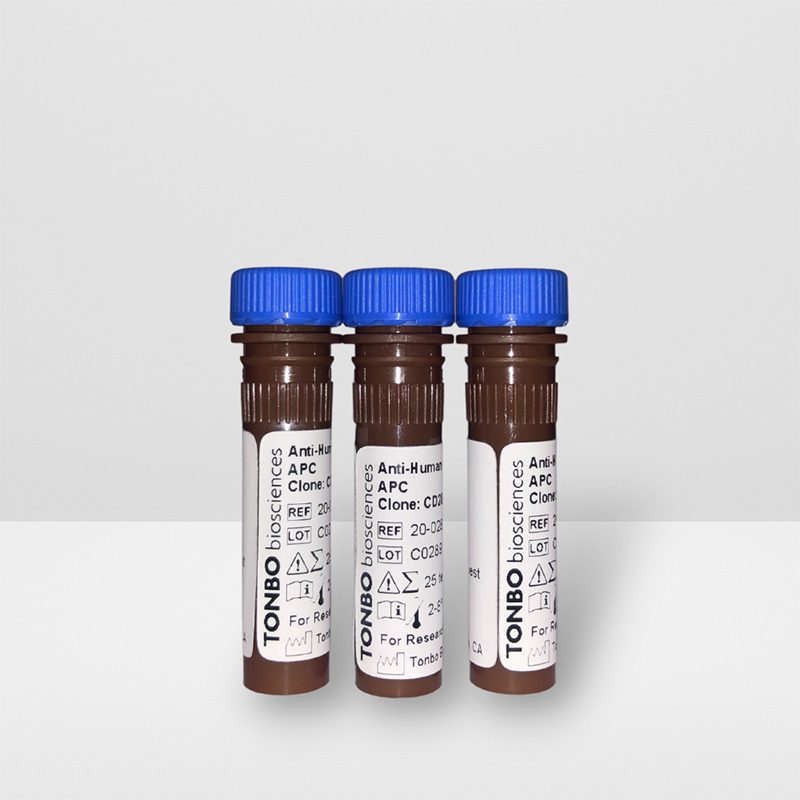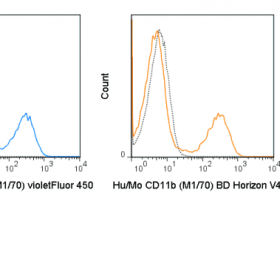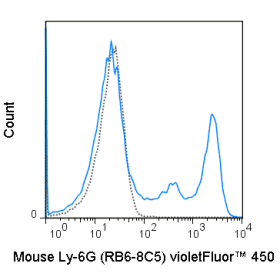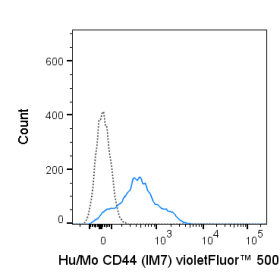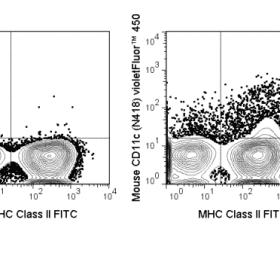| Cat No. | Size | Price |
|---|---|---|
| 25-0088-U025 | 25 µg | $68.00 |
| 25-0088-U100 | 100 µg | $107.00 |
Description
The RPA-T8 antibody is specific for the 32-34 kDa alpha chain of human CD8, known as CD8a or CD8 alpha. CD8a can form a homodimer (CD8 alpha-alpha), but is more commonly expressed as a heterodimer with a second chain known as CD8b or CD8 beta. CD8 acts as a co-receptor for antigen recognition and subsequent T cell activation that is initiated upon binding of the T cell receptor (TCR) to antigen-bearing MHC Class I molecules. The cytoplasmic domains of CD8 provide binding sites for the tyrosine kinase lck, facilitating intracellular signaling events that lead to T cell activation, development, and cytotoxic effector functions. CD8+ cytotoxic T cells (CTLs) play an important role in inducing cell death of tumor cells, as well as cells infected by virus, bacteria or parasites.
The RPA-T8 antibody is widely used as a phenotypic marker for CD8 on cytotoxic T cells, thymocytes, as well as on certain cell types that do not also express the TCR, including some NK cells and lymphoid dendritic cells. It is cross-reactive with CD8 in several non-human species, including Baboon, Chimpanzee, Cynomolgus and Rhesus. If used together with an alternative Anti-Human CD8a clone, Hit8a, the RPA-T8 antibody will not block binding of Hit8a to CD8a.
Product Details
| Name | APC-Cyanine7 Anti-Human CD8a (RPA-T8) |
|---|---|
| Cat. No. | 25-0088 |
| Alternative Names | CD8 alpha, leu-2a |
| Gene ID | 925 |
| Clone | RPA-T8 |
| Isotype | Mouse IgG1, kappa |
| Reactivity | Human |
| Cross Reactivity | Chimpanzee, Baboon, Cynomolgus, Rhesus, Sooty Mangabey |
| Format | APC-Cyanine7 |
| Application | Flow Cytometry |
| Citations* | Estes JD, Gordon SN, Zeng M, Chahroudi AM, Dunham RM, Staprans SI, Reilly CS, Silvestri G, and Haase AT. 2008. J. Immunol. 180: 6798-6807. (Flow cytometry – Rhesus macaque and Sooty Mangabey)
Chlereth B, Fichtner I, Lorenczewski G, Kleindienst P, Brischwein K, da Silva A, Kufer P, Lutterbuese R, Junghahn I, Kasimir-Bauer S, Wimberger P, Kimmig R and Baeuerle PA. 2005. Cancer Res. 65: 2882-2889. (Immunohistochemistry – frozen tissue) Mack CL, Tucker RM, Sokol RJ, Darrer FM, Kotzin BL, Whitington PF and Miller SD. 2004. Pediatr. Res. 56(1) :79-87. (Immunohistochemistry – frozen tissue)Huang Z-Y, Hunter S, Kim M-K, Chien P, Worth RG, Indik ZK, and Schreiber AD. 2004. J. Leukoc. Biol. 76:491-499. (in vitro activation) Kayagaki N, Yamaguchi N, Nagao F, Matsuo S, Maeda H, Okumura K, and Yagita H. 1997. Proc. Natl. Acad. Sci. 94:3914-3919. (Immunoprecipitation – transfected cells) Deng MC, Bell S, Huie P, Pinto F, Hunt SA, Stinson EB, Sibley R, Hall BM, and Valantine HA. 1995. Circulation. 91: 1647-1654. (Immunohistochemistry – OCT embedded frozen tissue) |
Application Key:FC = Flow Cytometry; FA = Functional Assays; ELISA = Enzyme-Linked Immunosorbent Assay; ICC = Immunocytochemistry; IF = Immunofluorescence Microscopy; IHC = Immunohistochemistry; IHC-F = Immunohistochemistry, Frozen Tissue; IHC-P = Immunohistochemistry, Paraffin-Embedded Tissue; IP = Immunoprecipitation; WB = Western Blot; EM = Electron Microscopy
*Tonbo Biosciences tests all antibodies by flow cytometry. Citations are provided as a resource for additional applications that have not been validated by Tonbo Biosciences. Please choose the appropriate format for each application and consult the Materials and Methods section for additional details about the use of any product in these publications.
[accordions]
[accordion title=”Protocols”]Technical Date Sheet[/accordion]


